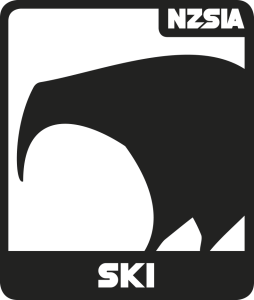Centre of Gravity & Base of Support
Therefore, to balance against the force from the snow in a ski turn the centre of gravity must move inside the turn, which means when turning, the path of the centre of gravity will always move inside the path of the base of support.
Lateral movement of the centre of gravity towards the centre of the turn is required to balance with the forces. As the skier’s centre of gravity moves towards the centre of the turn, the paths of the centre of gravity and the base of support (when viewed from above) are different. There will be some amount of difference in paths taken by the centre of gravity and the base of support in all turns.
The degree skiers can incline, or move their centre of gravity inside their base of support is defined by the amount of centripetal force acting on them. The faster the skier goes or the tighter the radius, the greater the centripetal force (see section on centripetal force) and, therefore, the more a skier can incline. In a wedge turn the skier is travelling at a fairly slow speed and centripetal force, while present, is low in intensity. Therefore, the path of the centre of gravity is close to the path of the base of support. A basic parallel turn is faster and the centripetal force is greater; therefore, the path of the centre of gravity and base of support are further apart. Finally, in a dynamic medium radius turn, the force from the snow is more intense. This requires the skier to incline a great deal to stay in balance, resulting in the centre of gravity and base of support following quite different paths (see diagram 6 below).
For turning to take place the ski must grip the snow to some degree. This is dependent on:
- The ski penetrating the snow
- The snow holding and pushing back against the ski

When the ski is tipped up onto edge and the ski penetrates the snow it creates a groove to support the ski. This groove is referred to as platform angle. The ski will hold in its groove if the platform angle is 90 degrees or lower relative to the reacting force pushing back from the snow. If the platform angle is greater than 90 degrees relative to the reaction force pushing back from the snow, the ski will begin to slip and skidding will occur. This is different to a skis edge angle which is the way to measure how much the ski will bend during a turn. Controlling edge angle will impact the shape of a turn. Controlling platform angle will impact whether or not the ski grips and holds, or slips and skids during a turn.
(Ron Le Masters, Ultimate Skiing, 2009).

